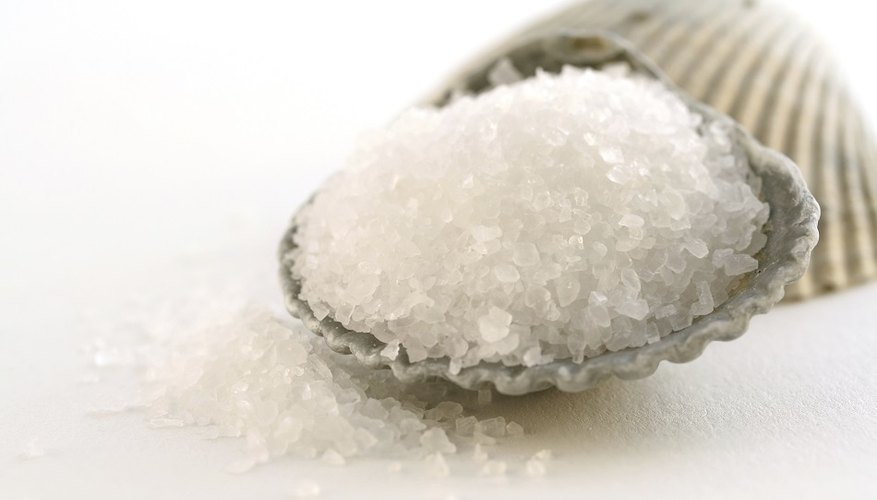Regular table salt contains almost pure sodium chloride. Sea salt, on the other hand, contains sodium chloride in addition to numerous other minerals. Some of these minerals, such as magnesium sulphate, exhibit hygroscopic behaviour -- that is, they absorb moisture if left exposed to air. Fortunately, heating the salt reverses this process and drives off the moisture. No hard and fast rules exist for drying sea salt. Chemists, however, use some of the minerals in sea salt, such as calcium sulphate, as drying agents -- compounds that absorb water from other liquids. They then "regenerate," or dry, these minerals at about 210 degrees Celsius (410 degrees Fahrenheit), for about an hour.
- Regular table salt contains almost pure sodium chloride.
- Chemists, however, use some of the minerals in sea salt, such as calcium sulphate, as drying agents -- compounds that absorb water from other liquids.
Pour the sea salt into a large baking tray. Spread the salt out to a uniform thickness and make certain the salt is no more than about 1.2 cm (1/2-inch) deep. If not all of the salt will fit in the pan, then either use more than one pan or perform the drying operation in two or more batches.
- Pour the sea salt into a large baking tray.
- Spread the salt out to a uniform thickness and make certain the salt is no more than about 1.2 cm (1/2-inch) deep.
Place the salt-filled baking tray on a mid-level oven rack, approximately in the middle of the oven.
Turn on the oven and set the temperature to 65.6 degrees Celsius (150 degrees F). Allow the salt to dry at that temperature for about an hour. This preliminary drying step will prevent the salt from drying too quickly, which can cause the salt crystals to fracture.
Set the oven temperature to 210 degrees Celsius (410 degrees F) and allow the salt to remain at that temperature for one hour, then turn off the oven.
Remove the dish from the oven while the salt is still warm and transfer it to an airtight container for storage.
WARNING
Seal the dried salt while warm, but not hot. If the salt is hot when the container is sealed, it will create a vacuum and cause the container to be difficult to open.
